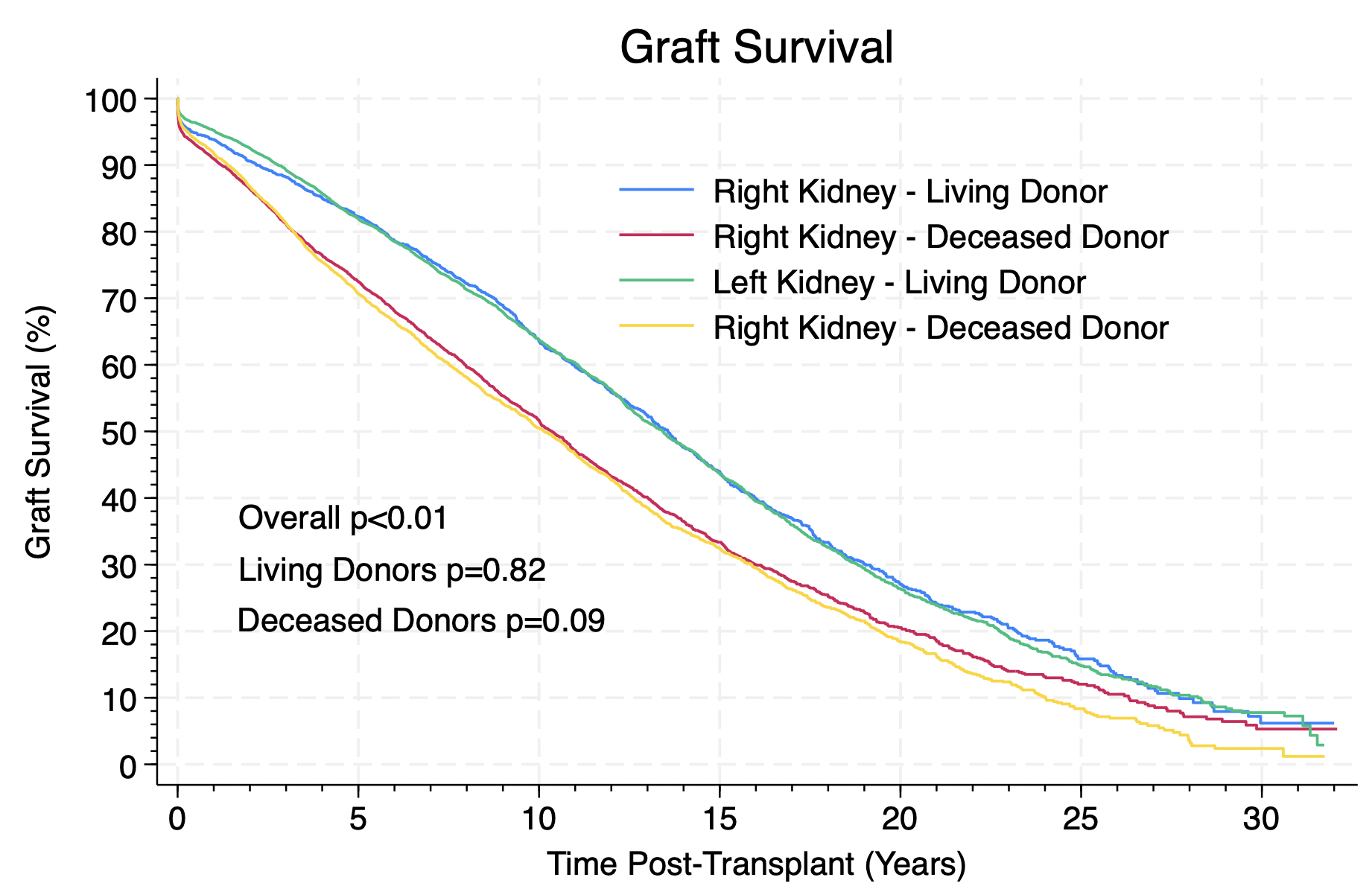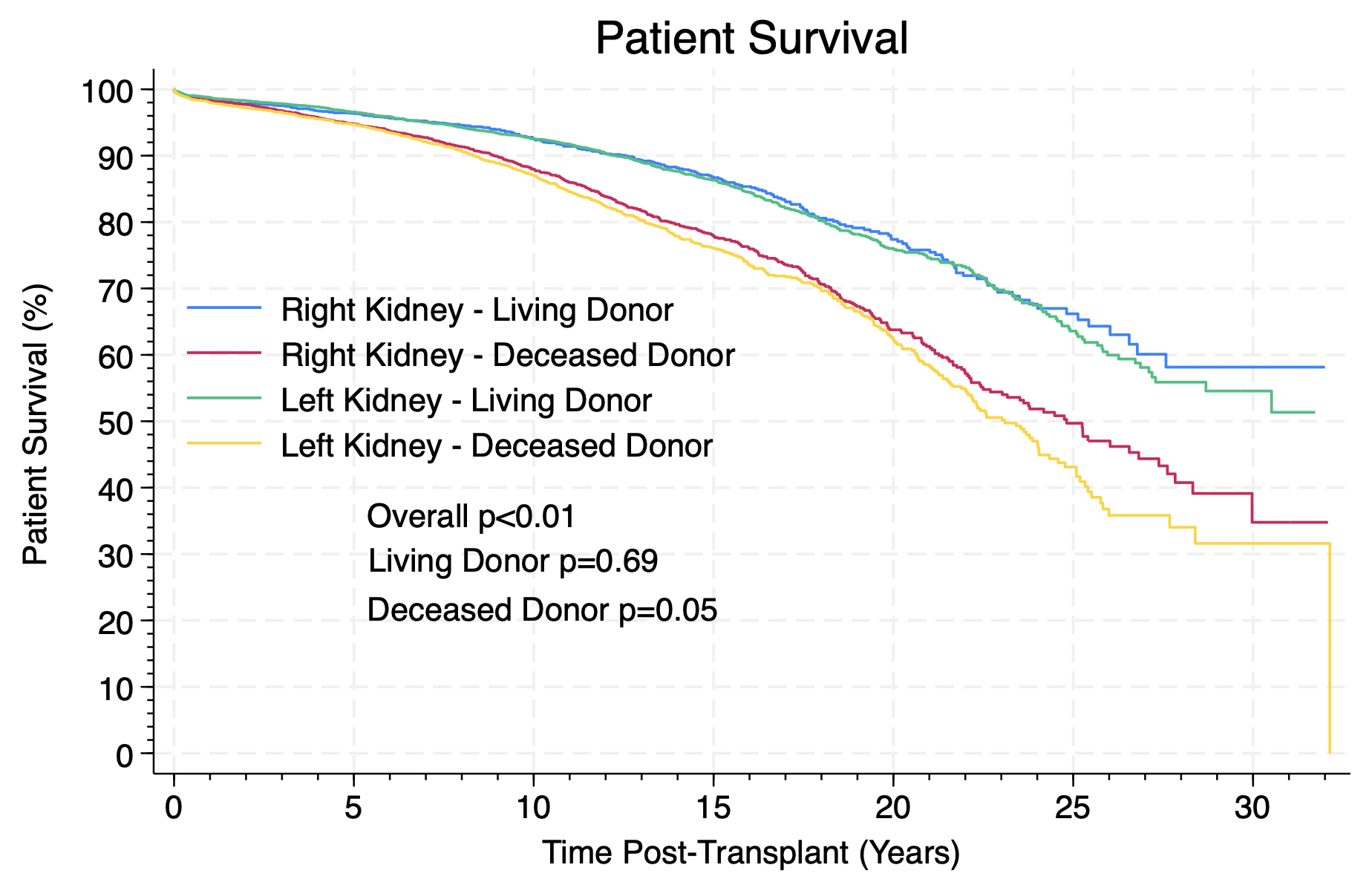
Long-term outcomes of right versus left kidney transplants over a 33-year period in the USA – A comparative study
Alicia Paessler1, Jelena Stojanovic1,2, Ioannis Kostakis3, George Papadakis1,4, Helen Jones4, Francis Calder1,4, Ioannis Loukopoulos1,4, Nicos Kessaris1,4.
1Renal Unit, Great Ormond Street Hospital for Children NHS Foundation Trust, London, United Kingdom; 2Institute of Child Health, UCL, London, United Kingdom; 3Transplant Surgery, Royal Free NHS Foundation Trust, London, United Kingdom; 4Transplant Surgery, Guys and St Thomas' NHS Foundation Trust, London, United Kingdom
Introduction: Right kidneys have shorter renal veins than left kidneys. This may make the transplant surgery more challenging although there is no evidence supporting this in paediatrics. We reviewed the use of right versus left kidneys transplanted in children over a 33-year period in the USA.
Methods: Data were retrieved and analysed on right versus left kidney transplants performed in paediatric recipients from 1987-2020, from the United Network for Organ Sharing. Data were compared using chi-square test, t-tests and Kaplan-Meier survival analysis.
Results: Overall, 38% (n=9,160) of kidney transplants in children were done using right kidneys, with right kidneys being used more often in organs coming from deceased donors (DD) (42% of DD kidneys, and 25% of living donor (LD) kidneys, p<0.01). Right kidneys had significantly more delayed allograft function than left kidneys (11.1% vs 7.5%, p<0.01) even when accounting for donor type (5.8% vs 4.6% p=0.01 in LD transplants, and 15.0% vs 12.8% p<0.01 in DD transplants). However, there was no significant difference in primary non-function (p=0.37). In DD transplants, right kidneys were more likely to develop a thrombus (1.8% vs 2.6%, p<0.01). Kaplan-Meier analysis also showed that right kidneys had a worse allograft survival (median survival 11.3 years vs 12.2 years, p<0.01). However, when accounting for donor type and transplant era, this difference is no longer significant (Figure 1A). The same findings were found for patient survival (Figure 1B).


Discussion: Left kidneys are more frequently used in LD as the choice of a longer renal vein makes transplantation easier. Using right kidneys for transplantation, where the vein is shorter and may require extension, carries an increased risk of delayed allograft function and thrombus formation. However, when adjusted for donor type there was no significant difference in allograft or patient survival when using right kidneys compared to left kidneys even in LD.
[1] Right Vein
[2] Left Vein
[3] Kidney Transplant
[4] OPTN